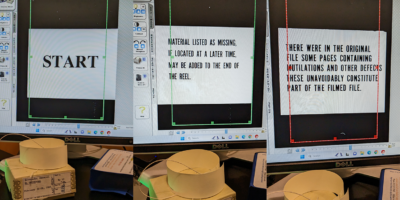by Luke Waltzer
In Spring 2017, five CUNY faculty members — Prithi Kanakamedala (Bronx Community College), Leah Anderst (Queensborough Community College), Janette Tilley (Lehman College), Jennifer Corby (Kingsborough Community College), and Andie Silva (York College) — participated in the first CUNY Academic Commons Faculty Fellows program. In exchange for a small stipend and with the dedicated support of the CUNY Academic Commons Team, each faculty member taught an undergraduate course using the Commons.
This program emerged out of the CAC’s interest in enhancing the Commons as a space for undergraduate teaching. Our team — Laurie Hurson, Michael Branson Smith, and myself — was particularly interested in exploring the challenges faculty from different campuses, disciplines, and populations of students encountered when launching their courses on the Commons and getting their students comfortable working there.
We could not have selected a more thoughtful group of faculty members, and the reflections they’ve shared here are already helping the Commons team think through development and support priorities for the coming year. A few themes emerged from their experiences.
On-boarding: It’s often a challenge to get groups of students into a new digital space. Perhaps the sole advantage that Blackboard has over open publishing platforms like WordPress is that it is supported by the same central office at CUNY that manages student data, and they automate the launching of new courses that are populated with the relevant student accounts. This is done for every course taught across CUNY each semester.
By contrast, faculty using the Commons and other WordPress-based platforms must launch their own courses and add students themselves. It’s relatively easy to do, but when dealing with students with a range of technical facility and access, there will inevitably be some bumps in the road. Those of us who maintain platforms like the Commons should make sure our on-boarding processes are as clear and simple as they can be, while also encouraging a DIY approach. There’s value in asking both faculty members and students to actively orient themselves to the ed tech they’ll be using, but it shouldn’t be overly burdensome or confusing.
The Faculty Fellows reported challenges in this area, which the Commons team is working to address. They also noted that having access to a computer lab early in the semester where the class could work together to get on the Commons was helpful in building community around the shared process of entering the space.
Connected CUNYness: Another theme that emerged across the CAC Faculty Fellows’ reflections was the benefit of having students do their work on a CUNY-grown, supported, and networked system. They appreciated that students got in the habit of checking their school email addresses. One faculty member had students explore the Commons to get a sense of the broader intellectual communities of which their work would become a part. More than one expressed appreciation for being able to teach and work with students on a noncommercial platform. We appreciate that the fellows recognized and shared our sense of the value of a CUNY-built, CUNY-owned, CUNY-connected space.
Integrating Functionality: The Faculty Fellows took advantage of some of the custom functionality of the Commons. More than one noted the benefits of the Reckoning plugin, which was originally developed to ease grading on Blogs@Baruch. Others noted the value of having students receive notifications of new activity on their site, but were concerned that the site/group relationship that powers such notifications added excessive complexity to the interface. One faculty member made terrific use of the Events Calendar, but noted that this tool would be improved if it had the ability to import calendars across a range of formats. The Commons Team is working through the challenge of seamlessly integrating various functionalities while also retaining the modularity that that makes it a highly-customizable space.
Reflective pedagogy: Each faculty fellow used the Commons to support creative student projects that deepened engagement with their disciplines, while also learning how to scope expectations along the way. Prithi had her students work both individually and in groups to develop and explore historical questions, but found the logistical challenges of a semester that included a field trip to Washington D.C. limited her capacity to build a robust site for the course while supporting her students’ adaptation to it. Jennifer wrote about the Commons raising the visibility and seriousness with which students approached extra credit work, but ran into some technical hurdles with having students post their final projects. Janette scaffolded her students’ digital writing with the goal of integrating the course with the New York music scene, and helping students “feel connected with a community of musicians and listeners who care deeply about music—not just an arcane topic sequestered in a classroom in the Bronx.” Andie reflected on the pedagogical implications of sharing an experimental space with your students, and the level of transparency that requires.
The fellows also made practical requests—such as faculty-designed templates for their students to use on final projects—that offer exciting potential development goals. Faculty often treat “I wish” requests such as these as toss-away comments, but these are exactly the kinds of reflections and suggestions that educational technologists working on open tools need and love to hear.
We very much look forward to more exciting projects and generative feedback from CUNY faculty about their teaching on the Commons in 2017-2018. Stay tuned for information about 2017-2018 CUNY Academic Commons Faculty Fellowships.
Luke Waltzer is the director of the Teaching and Learning Center at the Graduate Center, and the Director of Community Projects for the CUNY Academic Commons.









Leave a Reply